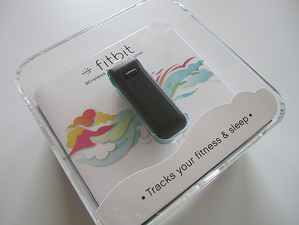We’ve come a long way since the standard pedometer. From smartphone apps that can tell you how healthy your food is to a wristband that tracks your activity and sleeping patterns, the “wearable wellness” trend shows no signs of slowing down. According to ABI Research, 13 million wearable devices will be integrated into corporate wellness plans over the next five years – an impressive jump, when you consider that less than 200,000 are currently incorporated.
The interest in wearables seems to stem from the higher-ups. For data-driven CEOs, offering these tracking devices to employees is an easy way to monitor their physical activity and health. The results don’t just drive the wellness program forward; in fact, the employees themselves often find themselves motivated by the data to eat better, move more and get the proper amount of sleep. The idea is being adopted by everyone from San Francisco start-ups to corporate giants like British Petroleum and eBay.
By encouraging employees to use mobile fitness apps or wearables and share their accomplishments, they are far more motivated to lead healthier lifestyles (which translates to less sick days, lower insurance costs and higher productivity for the employer). Plus, there are many ways to integrate a wearable into your wellness program without making it mandatory; consider it as an elective option, or offer specific rewards for hitting milestones with the technology.
If you’re shopping around for a wearable for your wellness program, there are a few different options on the market:
Fitbit: In 2013, Fitbit sold 67% of all the full-body activity trackers available. From stylish designer collaborations to near-flawless Bluetooth syncing with your iPhone or Android, the Fitbit is certainly a forced to be reckoned with in terms of sheer sales and reviews. In a Towers Watson study, the Fitbit Flex (their rubberized watch version) outperformed six other comparable wearables in its market. It’s the tech tool of choice for all of our wellness champions here at TotalWellness, and we believe in it so much that we offer the ability to integrate Fitbit with our corporate wellness portal program. The Fitbit One (the standard clip-on) is also worth noting for its accuracy and performance capabilities.
Jawbone’s Up24: A relatively new offering, the Up24 is often toted as the “next generation” of wristband trackers. It constantly tracks your activity, wirelessly syncs with computers and can connect with other apps on your phone. It is a smartphone exclusive (meaning you can't integrate it with your worksite wellness portal) and must be plugged into your phone in order to sync up the data.
Fitlinxx Pebble: Since it's worn around the shoe/ankle, the Pebble has the distinct advantage of collecting the most accurate data in terms of steps. In the 2,000 step Towers Watson study, it came within 1% of the correct measurement, followed by the FitBit One and Jawbone Up.
Misfit Shine: This elegant fitness tracker is waterproof up to 50 feet and is considered the "stylish" option for wearable shoppers. It's able to tell if you're walking, running, swimming or cycling; however, since there is no display, you aren't able to track your stats on-the-go.
Withings Pulse: The big advantage to the pulse is its addition of an optical heart rate sensor, in addition to the typical inclusions of a pedometer, altimer (for stairs) and sleep trackers. While most reviews on the Pulse are pretty positive, the Towers Watson study did note the fragility of the device, which broke 5 days into the review.
Regardless of what tool you choose, the future for the field of wearable tech is constantly changing and ever-evolving. We’re excited to see where these steps lead!



